About 100 km from Phan Thiet city, Binh Thuan Province, lies a beguiling beach that’s a photographer’s dream. Set beneath a 19th-century grotto pagoda, the beach features surreal rocks and a sandy stretch that looks fit for faerie folk. Co Thach not only draws picture-takers but nature-lovers young and old who delight in the simple pastime of pebble spotting.
One of Binh Thuan’s best beaches
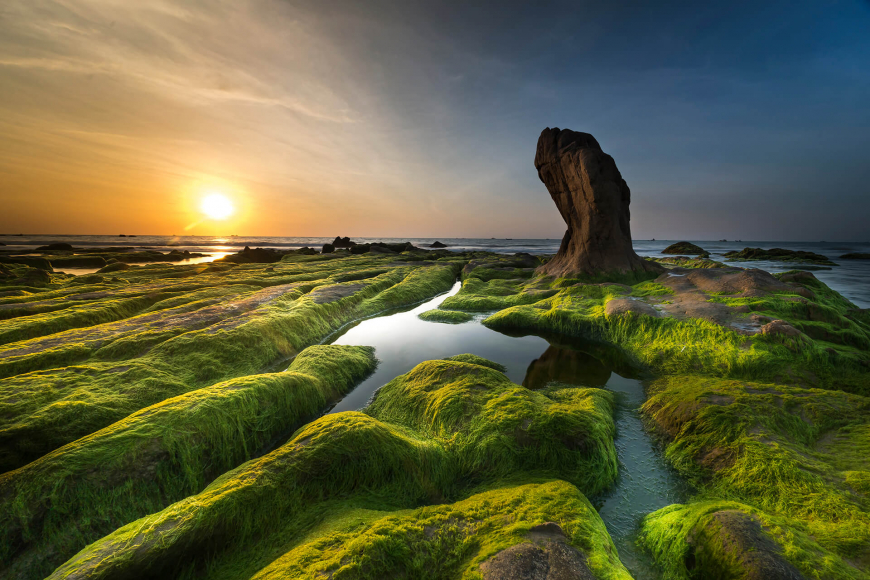
Vietnam boasts many landscapes that make for stunning nature photographs, including beautiful wild beaches that offer something unique. For example, Phu Quoc Island has Bai Sao − the beach full of starfish. Halong Bay has many beaches tucked between towering limestone karsts. And Ly Son Island has the To Vo Archway, formed from volcanic rock.
On the south-central coastal mainland, Binh Thuan Province is known for its many romantic, untouched beaches. That’s in addition to its other dramatic landscapes, such as peaceful lakes, red-and-white dunes, and appealing forests. The province is a paradise for nature enthusiasts wanting a mix of activities, from kayaking and surfing to hiking and off-road quadbiking.
If you’re heading there, you should take the time to visit Co Thach beach. The beach is about 100 kilometers from Phan Thiet City and 300 kilometers from Ho Chi Minh City. You can reach Co Thach beach by coach, train and motorbike. The 1km-long, 300m-wide stretch draws visitors intrigued by its unusual rock formations, mossy seaweed, and sparkling carpet of multi-coloured pebbles.
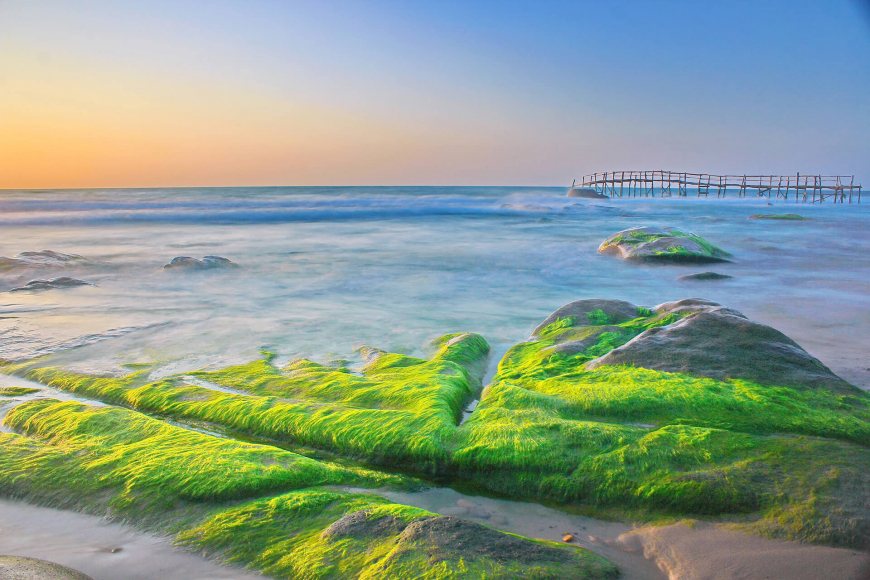
Stroll and spot pebbles
This beautiful landscape shows up in many photographs by professionals and amateurs alike. Why? On the stretch of beach beside the clear sea are thousands of pebbles in a dazzling array of shapes and colours. So much so, the beach is also known as the ‘seven-coloured stone beach’.
In 2011, the Vietnam Guinness Book Centre acknowledged the beach as one of the most colourful in the land, thanks to its multitude of stones and rocks. They’ve been tossed to and fro by the sea for thousands of years, so they’ve been altered and polished by the tides, brine and currents.
The pebbles of varying shapes, sizes and colours sparkle like an iridescent rug of precious gemstones. Some are squarish, oblong, rounded, triangular, heart-shaped. Their natural colours include white, black, yellow, brown. And many of the stones have fascinating colour veins. Pebbles-spotters can happily spend hours strolling the beach, scanning for unusual finds. You’ll see some stacked into cairns or balancing like Zen stone sculptures.
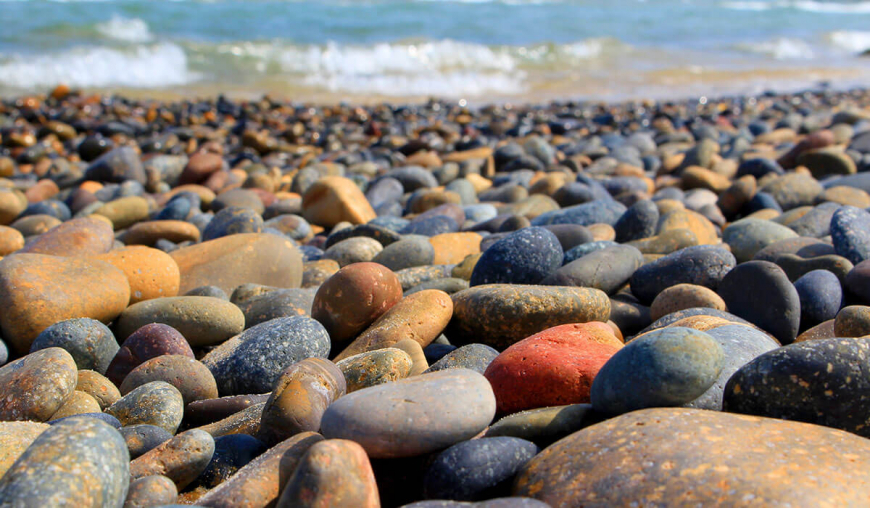
Source: Internet
Admire the rocky outcrops
What’s more, between these pebbles are peculiar rock formations jutting up from the earth. Some look like strange sea creatures, others look like animals or old people hunched over. See if you can spot the elephant-shaped one, or the one that resembles an ostrich.
Photograph their textures and angles. Or scramble up a boulder for some quiet contemplation time.
Go during moss-hunting season
Then, at the same time every year, many of the beach’s rocks become covered in soft mossy seaweed, which is a sight to see when the light and tide are just right. For this reason, Co Thach Beach is a dream nature-study subject for photographers.
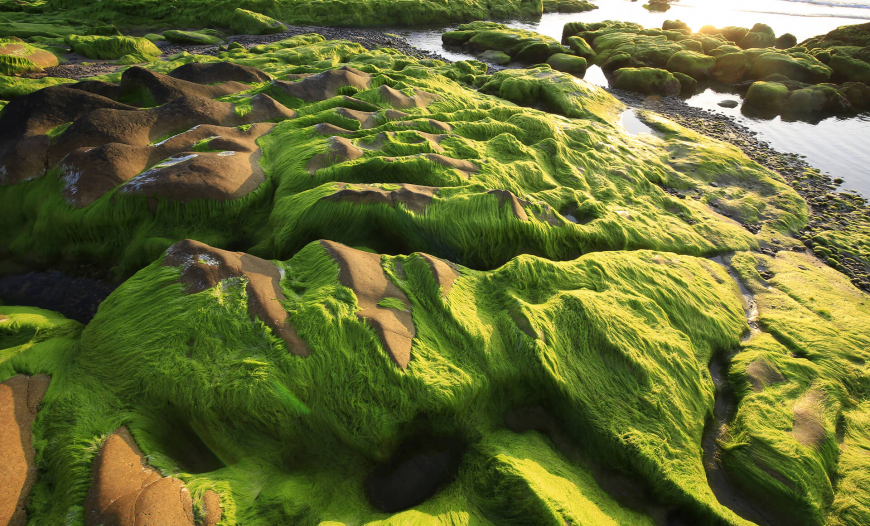
Mid-March is the best time to see this surreal sight, as this is when most of the rocks have their fuzzy green covering, which turns many shades depending on the angle of the light. At midday, the moss turns golden in colour. Outside of mid-March, there’s still a good chance you’ll catch this phenomenon any time after Lunar New Year right up until April.
As the tide recedes, especially at sunrise or sunset, you’ll witness a kaleidoscope of colours when the sun hits the moss-draped rocks between the pools of shimmering seawater. Depending on the angle of the light, colours that can be seen include green, blue, turquoise, purple, even red.
Visit the Grotto pagoda
After your beach sojourn, stop for a bite of fresh seafood at the nearby stalls. Then climb the stone steps along an airy, shaded path to reach the Co Thach Pagoda. Also known as Chua Hang (Grotto pagoda), it was built in 1835 by Zen Master Bửu Tạng. Many devotees come on pilgrimages to this temple, 64 metres above sea level, to pray for happiness and good fortune, particularly around the Lunar New Year.
Set within cliff caves, this 2,000m2 heritage site features bold Buddhist architecture with many sacred statues. Admire the intricate roof designs, the mosaic tiles on the pillars and arches, and the beautiful mural paintings on the stone walls, which depict the life of Buddha and the Bodhisattvas. The view of the stone beach from this vantage point is incredible, especially from the Goddess of Mercy statue.
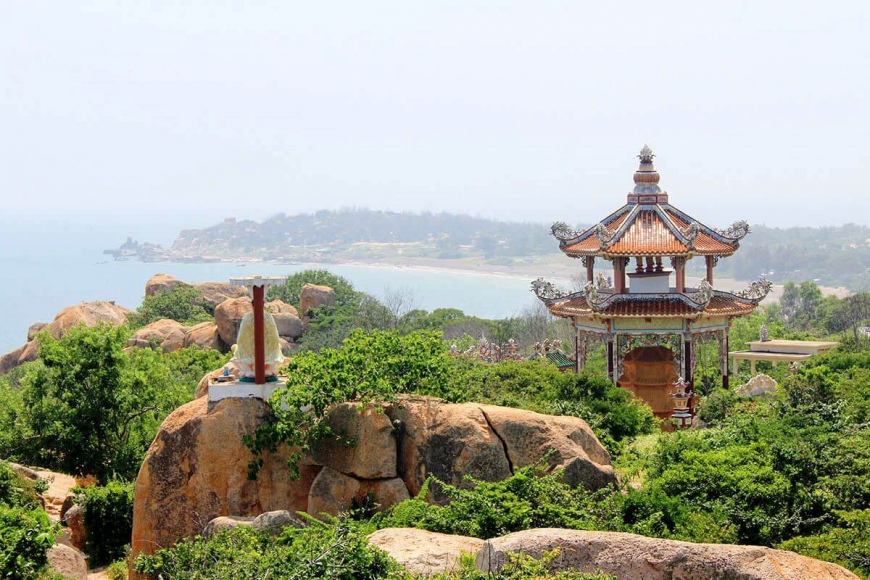
Source: Internet




